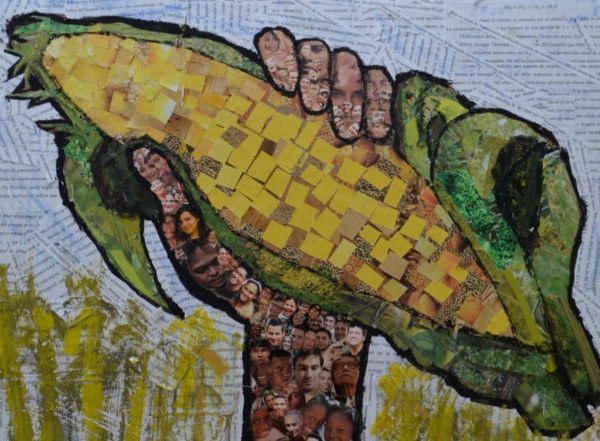




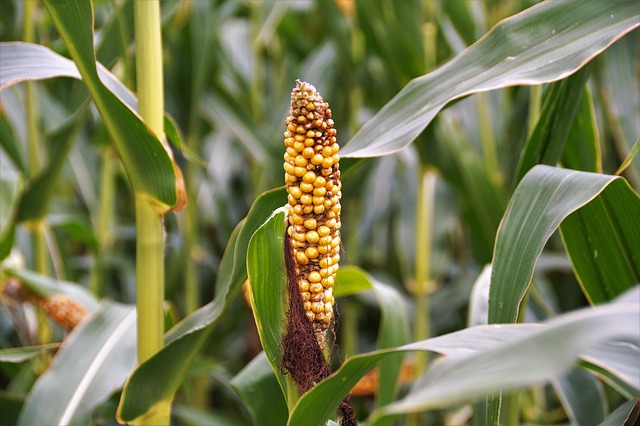
Re-published from the CONNECTED Virus Network website. Thanks to Richard Wyatt for sharing.
An innovative partnership between two city universities has resulted in a brand new 90-second animated film about plant diseases that devastate African food crops. Two students from UWE Animation at UWE Bristol were commissioned by the CONNECTED Virus Network, based at The University of Bristol and Newcastle University, to make the short cartoon.
In a simple and hard-hitting way, the film depicts how the staple food crop cassava is destroyed in Sub-Saharan African countries by viruses carried by whiteflies. It draws attention to the way the 1,100-strong CONNECTED Virus Network is bringing together world-class researchers from across the globe to address these issues.
Early in 2019 Eve Bannister and Charlotte May were successful in a process which saw students pitch to the CONNECTED Network to create a film which, with the co-operation of their tutors, would form a key component of their second year of studies.
Their brief was to create a 90-second outreach animation about plant diseases’ impact, primarily aimed at non-expert laypeople, and to draw attention to the importance of the CONNECTED Network in helping address these issues. It takes the example of the cassava crop to show the impact of two damaging diseases spread by insects.
The film uses imaginative stop-motion animation techniques, injecting colour and artistic interpretation to hold the viewer’s attention and to explain the food security challenges in extremely simple terms. Rather than offering technical explanations of disease symptoms, it outlines the broad issues at stake and what CONNECTED is seeking to achieve.
It’s a simple cartoon about a very serious subject.
Very few members of the public, or indeed governments, fully realise just how seriously plant diseases affect the lives of people in Sub-Saharan African countries. The devastation they cause can actually be more harmful and damaging than more commonly-known human diseases. We hope this short film contributes towards a better understanding.
We are extremely grateful to the students, and to the UWE Animation tutor team, for this exciting collaboration. We hope it plays a part in helping Eve and Charlotte develop successful future careers that we believe their talents merit.
CONNECTED Network Director, Prof. Gary Foster (University of Bristol)
Eve Bannister and Charlotte May worked from a series of images and other information supplied by a number of researchers working in the field in African countries.
Below is a subtitled of the same film. Enjoy!
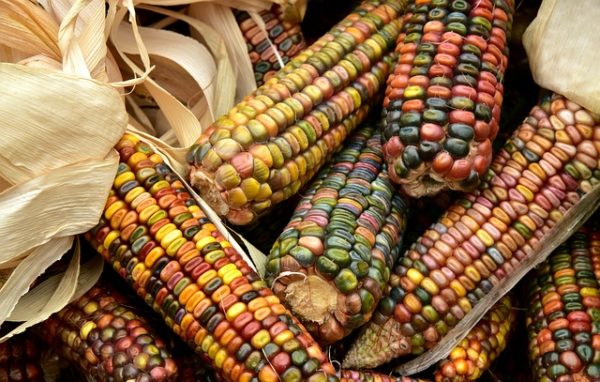
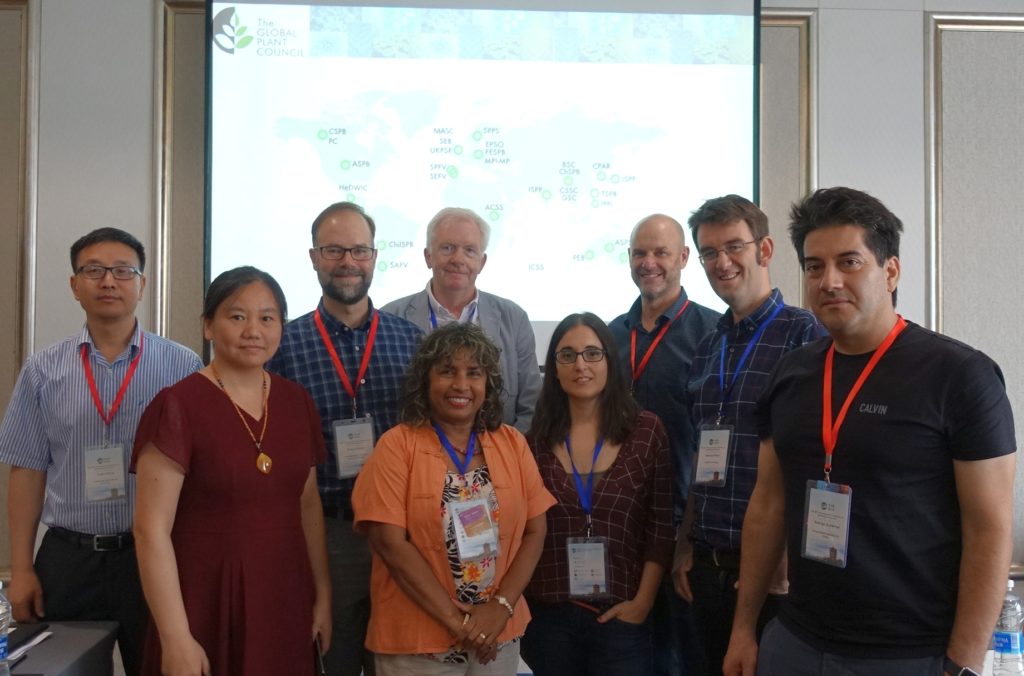
GPC annual meeting group picture. From left to right: Xuelu Wang (ICAR2019 organizer); Weihua Tang (China Society Plant Biology); Blake Meyers (Danforth Center); Deena Errampalli (GPC Board of Directors Treasurer, President, Plant Canada); Bill Davies (GPC Past-President, UK Plant Sciences Federation); Isabel Mendoza (GPC communications officer); Barry Pogson (GPC chair, Australian Society of Plant Scientists); Geraint Parry (SEB, MASC) and Rodrigo Gutierrez (Chilean Society of Plant Biology)
One of the Global Plant Council’s (GPC) principal objectives is to reach the global plant science audience. And to pursue this aim, the GPC annual meeting is held every year in parallel to a big plant science conference.
In accordance with this practice, the GPC took its annual meeting this June to the 30th International Conference on Arabidopsis Research (ICAR2019). This international conference was held on June 16-21, 2019 in Wuhan, China and attended by over 1,000 plant scientists from around the world.
GPC also took an active part in the conference itself hosting two of the offered workshops. Understandably, many members of GPC board were there, either as invited speakers (Barry Pogson, GPC Chair); or as part of the workshops organizing team (Bill Davies, GPC past-president; Deena Errampalli, GPC treasurer; Yosuke Saijo (Board Member) and Isabel Mendoza (GPC communications officer).
The first workshop “Role of the microbiome in sustainable agriculture” was held on the 18th June. Led by Deena Errampalli and Yosuke Saijo and with the participation from Bill Davies, Ruben Garrido-Oter and Kei Hiruma. Over 40 people attended the workshop, which provided participants with up-to-date knowledge on the role of the microbiome in Arabidopsis and its application on sustainable agriculture. Practical cases such as the Canadian ginseng were also introduced.
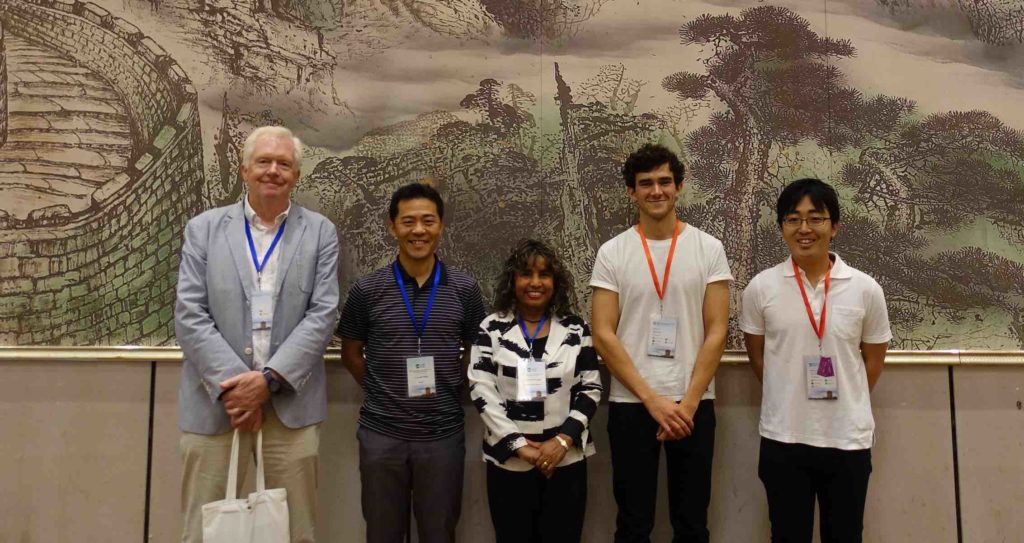
On the 19th June, the GPC team held the second of these workshops “Communicating your science to the broader community” addressed especially for early career researchers. Over 45 people attended. This meeting was led by Isabel Mendoza with the cooperation of Mary Williams (@PlantTeaching) and Geraint Parry (@GARNetweets). The meeting provided participants with clues on how to increase the impact of their own research, helping them understand the rules of science communication and tricks on how to profit from the more commonly used online channels.
This was the first dissemination activity of the recently established Early Career Researcher International (ECRi) network, an initiative that aims to help the ECRs in developing their careers. A dedicated post on the issues discussed at the workshop is on development. Stay tuned!


By W.J Davies and Jianbo Shen
Lancaster Environment centre, Lancaster University, Lancaster, LA1 4YQ. The UK and National Academy of Agriculture Green Development, Centre for Resources, Environment, and Food Security, China Agricultural University, Beijing, 100193, China.
Fourth post of our “Global Collaboration” series
In early 2019, the EAT-Lancet Commission on Healthy Diets from Sustainable Food Systems produced its first report. The Commission report addressed our need to effectively ‘feed a growing global population with a healthy diet while also defining the kinds of sustainable food systems that will minimise damage to our planet’. While it is clear that our current food and farming practices threaten both human and planetary health, the Commission concludes ‘that Global Food Systems can provide win-win diets to everyone by 2050 and beyond. However, this will require nothing less than a Great Food Transformation’
Despite a growing realisation of the magnitude of the challenges that are a part of such transformations, in most societies, progress is slow. Plants Science has much to contribute to enable better diet quality, increase crop productivity, enhance environmental sustainability and create new products and manufacturing processes (see example) but cannot alone bring about all of the required transformations.
For the required changes in government policies and in human behaviour, we must be able to convince people of both the nature and magnitude of the growing threats to human and planetary health as well convince all sectors of society to adopt as targets for the future, such as the UN Sustainability Goals. A range of actions is required from both organisations and individuals working at all scales.
Effective knowledge exchange (KE) mechanisms between scientists and food producers is recognised as being key to delivery of many changes in practice required within the framework defined above. Change is perhaps more easily achieved at the industrial farming scale where new genotypes and changes to farming systems are commonly produced and accepted. A wide range of publications means that practitioners can regularly see that these innovations can have significant effects on food availability and quality. However, most food in the world is still produced by smallholders and effective examples at scale of KE between science and this community are less common.
In China, there is an urgent need to address issues of food access and availability, food quality and safety and the environmental impact of agriculture in a society where diets are changing as the economy grows. As part of China’s successful green revolution over the last 50 years, enormous increases in food production have been achieved largely as a result of advances in both plant breeding and agronomy Very large increases in the usage of fertiliser, agrochemicals and particularly of water have increased productivity but all of this has been very damaging to the environment in many regions. Commonly, both quality and safety of food are significant issues in China due to both contamination with agrochemicals and as a result of food fraud.
Nevertheless some positive changes are underway in the food system with increased consumption of fruit and organic vegetables in Chinese diets but even here extra water use is often required and this is certainly the case also as a result of increasing consumption of meat in the diets of increasing numbers of people. Excess water consumption has reduced water tables in many regions of China (and other important food production regions). Reduction to dangerously low levels is leading to desertification in some regions with real threats to capacity for sustained production by farmers in these and other regions. Excess fertiliser use has resulted in many high profile pollution problems in surface waters which are valuable both for agriculture and for cultural tourism.

The introduction by scientists at China Agriculture University of ‘Science and Technology Backyards’ (STBs) is one very innovative approach to helping smallholders in China transform agriculture to respond to the challenge of greater ‘Ecological Civilization’, as set out in recent years by the Chinese Government. Using such an approach to exploit recent advances in plant and crop science is very much in tune with the agenda of EAT-Lancet Commission. In increasing numbers of communities across China, agricultural scientists living in villages among farmers to achieve yield and economic gains sustainably. The aims of this knowledge exchange programme are to advance participatory innovation and technology transfer and garner public and private support for these innovations. The approach has identified multifaceted yield-limiting factors involving agronomic, infrastructural, and socioeconomic conditions and interventions at the personal and community level are transforming peoples’ lives.
Due to past experiences of famine and political instability, China’s government has made grain production and food security a top priority for the nation. By the 2000s, after years of food shortage, China finally produced enough food annually to feed its enormous population. Now, China has set a new target of green growth in future grain production. This target involves high efficiency in resource use with reduced environmental risk. Novel developments in agronomy enable maintenance of a relatively high grain yield on a regional scale. To help deliver on these targets, China is also developing strong policy incentives for environmental protection and green growth in grain production. Going forward, it is planned that Chinese agriculture will continue to put into practice a vision of innovative, coordinated rural revitalization and green development. The science and technology backyard (STB) model could provide an effective approach to realize the green development of agriculture, as it aims to close yield gaps in China by empowering smallholder farmers through integrating efforts of researchers, farmers, the government, and agro-enterprises.
Success at scale in improving sustainable resource use and increasing grain production in China will enhance the country’s food security while decreasing poverty and the environmental footprint of food production, thereby contributing to the global goal of sustainable development. To meet new demands of Chinese agriculture in a new era, as well as for promoting further implementation of United Nations (UN) Sustainable Development Goals (SDGs), the National Academy of Agriculture Green Development and the International School of Agriculture Green Development were launched by China Agricultural University in July, 2018. A national strategy of Agricultural Green Development, issued by the central Chinese Government is likely to provide valuable understanding and new production practices, particularly for smallholders in other developing countries that are already facing or will soon face dietary and environmental challenges similar to those currently faced by China.


By Mathew Reynolds, Wheat Physiologist at, CIMMYT
First post of our “Global Collaboration” series
Wheat is the most widely grown crop in the world, currently providing about 20 percent of human calorie consumption. However, demand is predicted to increase by 60 percent within just 30 years, while long-term climate trends threaten to reduce wheat productivity, especially in less developed countries.
For over half a century, the International Wheat Improvement Network (IWIN), coordinated by CIMMYT, has been a global leader in breeding and disseminating improved wheat varieties to combat this problem, with a major focus on the constraints of resource poor farmers.
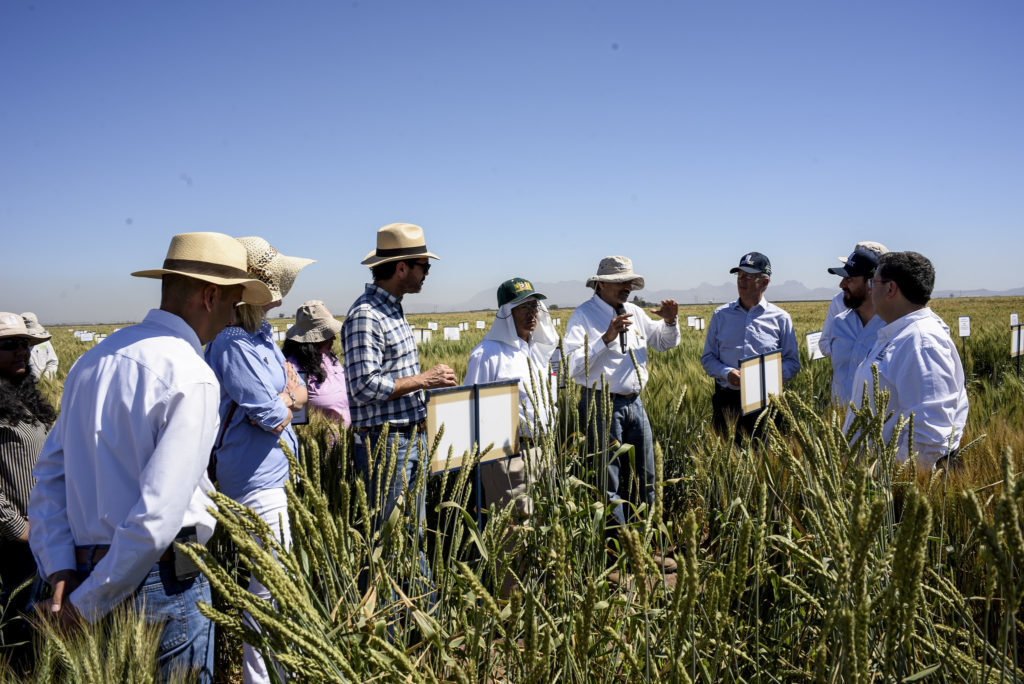
Two complementary networks — the Heat and Drought Wheat Improvement Consortium (HeDWIC) and the International Wheat Yield Partnership (IWYP) — are helping to meet the future demand for wheat consumption through global collaboration and technological partnership.
By harnessing the latest technologies in crop physiology, genetics and breeding, network researchers support the development of new varieties that aim to be more climate resilient, in the case of HeDWIC and with higher yield potential, in the case of IWYP.
These novel approaches to collaboration take wheat research from the theoretical to the practical and incorporate science into real-life breeding scenarios. Methods such as screening genetic resources for physiological traits related to radiation use efficiency and identifying common genetic bases for heat and drought adaptation are leading to more precise breeding strategies and more data for models of genotype-by-environment interaction that help build new plant types and experimental environments for future climates.
IWYP addresses the challenge of raising the genetic wheat yield potential of wheat by up to 50 percent in the next two decades. Achieving this goal requires a strategic and collaborative approach to enable the best scientific teams from across the globe to work together in an integrated program. TheIWYP model of collaboration fosters linkages between ongoing research platforms to develop a cohesive portfolio of activities that maximizes the probability of impact in farmers’ fields IWYP research uses genomic selection to complement the crossing of complex traits by identifying favorable allele combinations among progeny. The resulting products are delivered to national wheat programs worldwide through the IWIN international nursery system.
Recently, IWYP research achieved genetic gains through the strategic crossing of biomass and harvest index — source and sink — an approach that also validates the feasibility of incorporating exotic germplasm into mainstream breeding efforts.
In the case of HeDWIC, intensified — and possibly new — breeding strategies are needed to improve the yield potential of wheat in hotter and drier environments. This also requires a combined effort, using genetic diversity with physiological and molecular breeding and bioinformatic technologies, along with the adoption of improved agronomic practices by farmers. The approach already has proof of concept in the release and adoption of three heat and drought tolerant lines in Pakistan.
It is imperative to build increased yield and climate-resilience to into future germplasm in order to avoid the risk of climate-related crop failure and to maintain global food security in a warmer climate. Partnerships like HeDWIC and IWYP give hope to meeting this urgent food security challenge.
Further readings:
https://www.hedwic.org/resources.htm
https://royalsocietypublishing.org/doi/full/10.1098/rspb.2012.2190
An economist’s perspective on plant sciences: Under-appreciated, over-regulated and under-funded